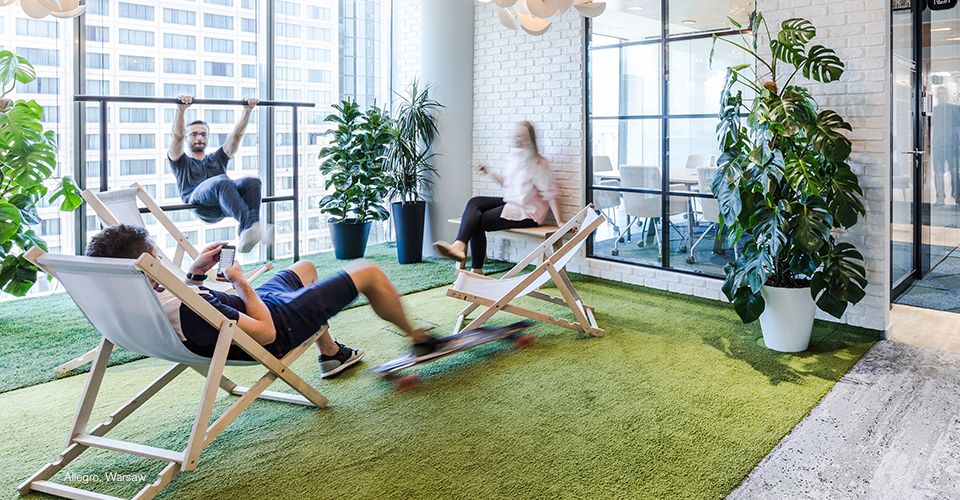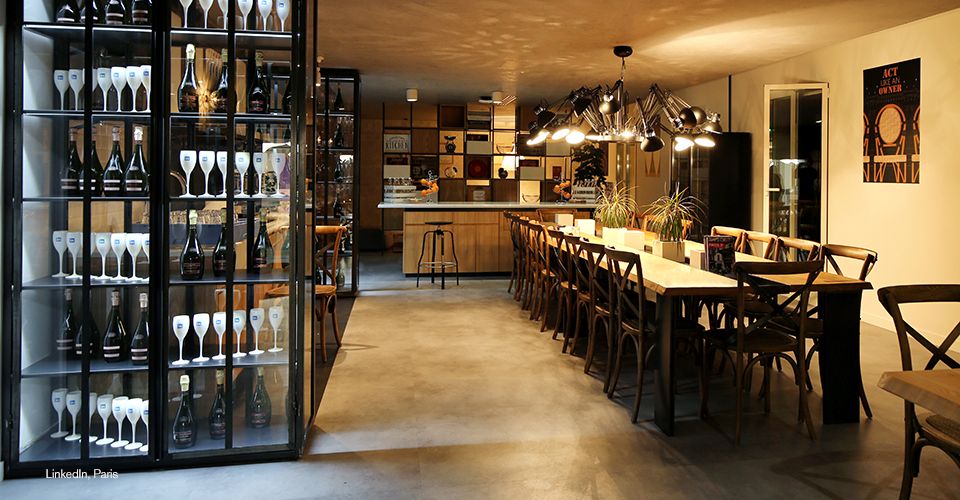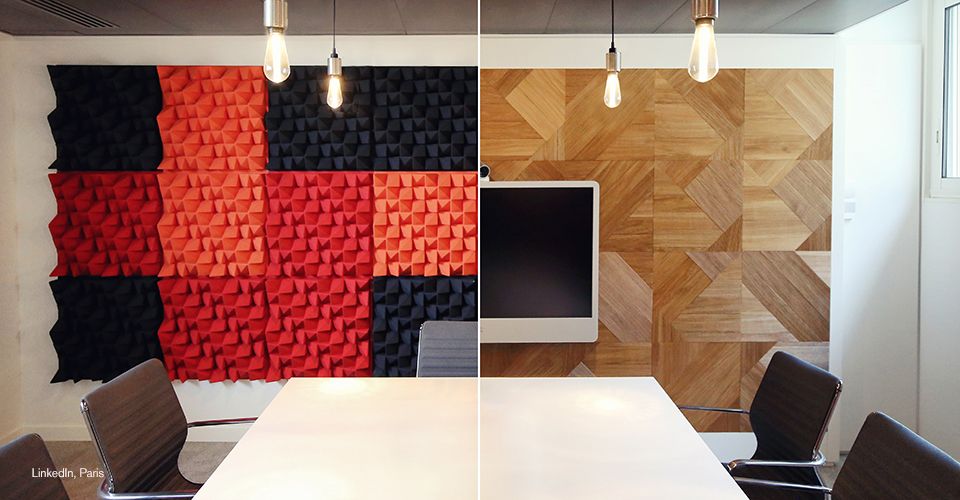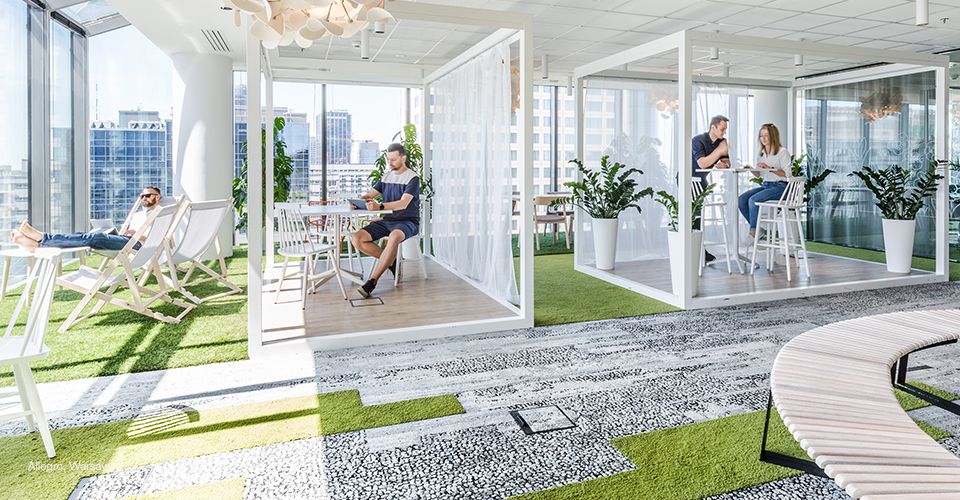Over the last four years we have been investigating the many benefits that a human centred design approach can offer, focusing on human connections to nature through the evolutionary approach of Biophilic Design. Much of what affects whether design is beneficial or not, comes down to our sensory experiences of spaces. However, what has become clear is that we all have different thresholds to those sensory inputs; what suits one person won’t necessarily suit another, yet many contemporary workspaces do not cater to this. This is now particularly difficult to keep track of as we shift to taking cognitive and sensory wellbeing into our own hands, creating productive workspaces at home as best as we can, which takes a certain self-reflection on our own sensory requirements. So, how do we better understand the landscape of this sensory diversity to create healthy and productive workspaces?
The issue of distraction
Perhaps now more than ever, we are surrounded by distraction and unnatural, urban environments, with little time or space to recuperate.
Mobile digital technology has intensified this issue, with the average phone user touching their phone 2,617 times a day. In fact,
- Almost three quarters of workers (70%) say they feel distracted at work
- More than 50% of employees don’t feel supported by their workplace
- Only 57% agree that their workplace enables them to work productively.
As such, we are multi-tasking, and this causes higher levels of cortisol and adrenaline, which really isn’t ideal for health, wellbeing, focus and productivity…

Allegro, Warsaw
Business case
In 2015, US workers were losing 3 hours per day, or 60 hours per month, to workplace distractions. Distractions result in rushed working and stress, and in 2012, stress-related absenteeism cost the UK £6.5 billion. It isn’t surprising, then, that 34% of employees are less satisfied with their jobs when they work in a distracting environment, and that this eventually results in higher staff turnover. Considering it costs an average of £11,000 to replace an employee on an average UK salary, providing areas for focused work can have tremendous economic benefits for a company. You will find our business case in our latest design guide, ready for you to take to your clients to convince them that considering the human senses in workplace design makes great sense indeed.

LinkedIn, Paris
Personality, Sensory Thresholds, and Neurodiversity
We receive 11 million bits of sensory information every second (only 50 of which we can process consciously). So, what do we need to pay attention to? There are seven recognised sensory systems that are continually transmitting or receiving sensory information. These are visual (sight), auditory (hearing), tactile (touch), olfactory (smell), gustatory (taste), vestibular (balance and sense of gravity), and proprioception (position of the body in space derived from muscle and joint feedback).
Our response to sensory stimuli can be determined by our personality, and also by our sensory threshold. Our sensory threshold is measured on a scale from low threshold to high threshold, upon which we all fall differently. This means that we each have a unique tipping point when it comes to sensory stimulation (something we also refer to as ‘neurodiversity’), which we discuss in detail within this design guide.

LinkedIn, Paris
Designing with the senses in mind
As such, the best approach in workplace design is to provide a range of sensory environments for people to move between according to their needs and preferences. We are still hard-wired to feel our best in spaces that are reminiscent of the balance we find in the natural environments that we once thrived in. Given this, we suggest taking inspiration from biophilic design principles when creating spaces with the senses in mind.
No matter what a person’s preferences are – whether they like to work in bustling, colourful, stimulating, environments full of textural variation (high threshold), or need a general sense of quiet, calm and comfort to be able to focus (low threshold) – they should always be able to find somewhere that suits them. You might like to take some inspiration from our featured case studies on Allegro’s office in Warsaw and LinkedIn’s Paris office, which provide some first hand insights to designing for diversity.

Allegro, Warsaw
In Summary…
By reading this guide, we hope you will come away with:
- Insights into – and the ability to explain – the benefits of designing for a range of sensory thresholds to improve wellbeing
- An understanding of how to use biophilic design features to support sensory and cognitive wellbeing in the workplace.
- Inspiration and confidence to put these ideas into practice, using our design suggestions for how to create visual, acoustic and tactile comfort for people with low, medium and high sensory thresholds.
As Architects and Designers, we should be striving to create workplaces that support cognitive and sensory wellbeing. Increasingly, forward-looking human centred workplaces are demonstrating the diversity of spaces needed when designing for this. We hope this guide will inspire you to investigate for yourself and your clients, helping you to put cognitive and sensory wellbeing at the centre of your building or next project.
Download the guide here to get going.
References
-
-
- https://blog.dscout.com/mobile-touches
- https://research.udemy.com/research_report/udemy-depth-2018-workplace-distraction-report/
- https://www.emerald.com/insight/content/doi/10.1108/14725960810872622/full/html
- https://www.emerald.com/insight/content/doi/10.1108/14725960810872622/full/html
- Levitin, D. J. (2015). Why the modern world is bad for your brain. The Guardian, 18.
- https://www.telegraph.co.uk/finance/jobs/11691728/Employees-waste-759-hours-each-year-due-to-workplace-distractions.html
- https://blog.dscout.com/mobile-touches
- https://research.udemy.com/research_report/udemy-depth-2018-workplace-distraction-report/
- https://www.emerald.com/insight/content/doi/10.1108/14725960810872622/full/html
- https://www.emerald.com/insight/content/doi/10.1108/14725960810872622/full/html
- Levitin, D. J. (2015). Why the modern world is bad for your brain. The Guardian, 18.
- https://www.telegraph.co.uk/finance/jobs/11691728/Employees-waste-759-hours-each-year-due-to-workplace-distractions.html
-